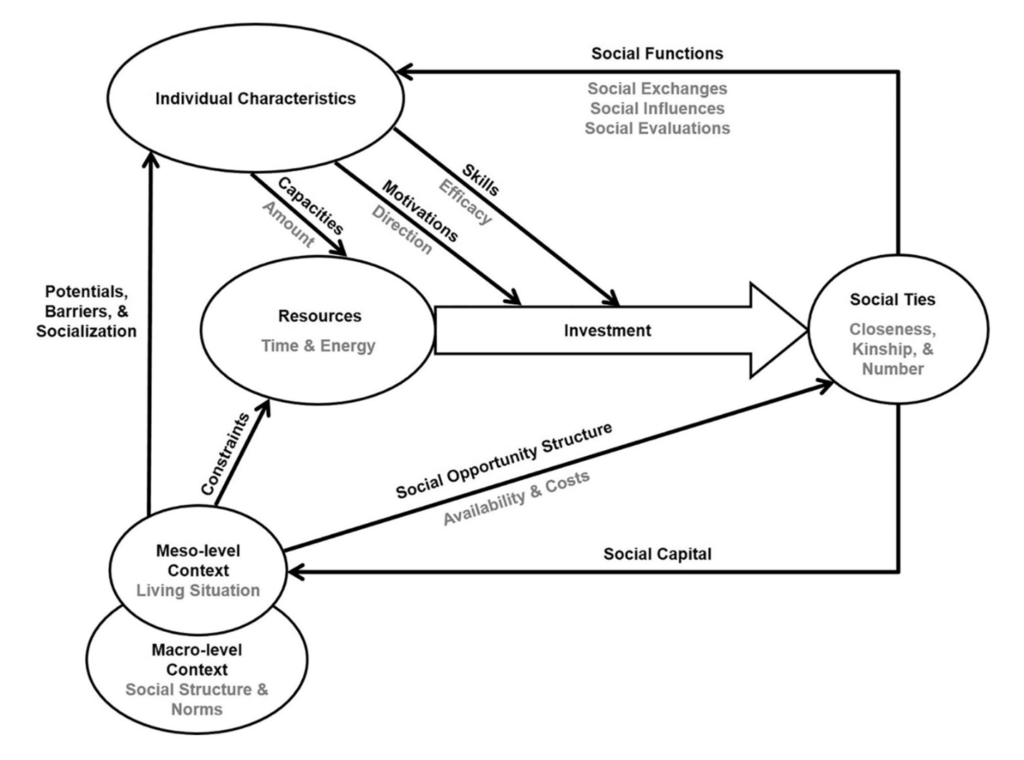How to Expand Your Social Network in Your 40s and 50s

How to Expand Your Social Network in Your 40s and 50s
As we navigate our 40s and 50s, maintaining and expanding our social networks becomes increasingly important for both personal and professional growth. This period of life often brings significant changes, such as children leaving home, career shifts, or retirement planning. Building new connections can enrich your life, enhance mental health, and provide opportunities for personal development. Here’s a comprehensive guide on how to expand your social network during this pivotal stage.

Why Expand Your Social Network?
-
Mental Health Benefits: Social connections can reduce stress, anxiety, and depression while boosting mood and self-esteem .3.
-
Professional Opportunities: Networking can lead to new career opportunities, mentorship, and access to valuable advice .6.
-
Personal Growth: Engaging with diverse groups exposes you to new experiences, hobbies, and perspectives .4.

Strategies for Expanding Your Social Network
1. Explore Your Interests
Join clubs or groups that align with your hobbies. Whether it’s cooking, hiking, photography, or reading, shared passions make for easy conversation starters and deeper connections.
-
Example: Look for local photography clubs where you can learn new techniques and meet fellow enthusiasts.
-
Platforms: Use Meetup.com to find groups in your area.

2. Volunteer
Offer your time to community services or local charities. Volunteering not only makes a positive impact but also exposes you to like-minded individuals.
-
Example: Volunteer at a local animal shelter or participate in park cleanups.
-
Benefits: Enhances your sense of purpose and provides opportunities to meet others with similar values.

3. Attend Workshops and Classes
Participate in workshops or classes that appeal to your desire to learn something new. This could be anything from pottery to programming.
-
Example: Enroll in a cooking class or a language course.
-
Benefits: Provides a casual environment for forming friendships over shared interests.

4. Reconnect with Old Friends
Reach out to people you’ve lost touch with over the years. Social media makes it easier than ever to reconnect with old friends or past coworkers.
-
Example: Send a friendly message on Facebook or LinkedIn.
-
Benefits: Rekindled friendships can be profoundly rewarding and provide a sense of continuity.

5. Use Social Media and Apps
Explore friendship apps designed for making new connections. Apps like Meetup or Bumble BFF can help you find local groups or individuals looking to make new friends.
-
Example: Join a book club or a fitness group through Meetup.
-
Benefits: These platforms are specifically tailored to foster platonic relationships.

6. Join Professional Networking Events
Engage in professional networking beyond your current job. Industry conferences, seminars, and happy hours are opportunities to meet peers.
-
Example: Attend a conference in your field or join a professional association.
-
Benefits: Even if the connection is professional, it can often lead to personal friendships.

7. Host Gatherings
Invite neighbors or colleagues over for dinner or a casual backyard BBQ. Hosting can help you strengthen casual acquaintances into friendships.
-
Example: Organize a potluck dinner or a game night.
-
Benefits: Makes the first move in building closer relationships.

8. Attend Local Events
Check out local events such as fairs, markets, or concerts. These gatherings are excellent opportunities to meet new people in a relaxed setting.
-
Example: Visit a local art festival or a farmers’ market.
-
Benefits: Engaging in local culture enriches your life experiences.

9. Start a Book Club
Create a book club if you enjoy reading. This is a fantastic way to see new faces and indulge in rich discussions.
-
Example: Choose a book and invite friends and acquaintances to join.
-
Benefits: Monthly meetings keep the social calendar active and engaging.

10. Take a Trip
Join a travel group or a guided tour of a place you’ve always wanted to explore. Travel often bonds people through shared experiences and unique adventures.
-
Example: Consider a group tour to Europe or a regional bus tour.
-
Benefits: Forms deep connections that last beyond the trip.

Navigating Social Media for Networking

1. Choose the Right Platforms
-
Facebook: Ideal for reconnecting with old friends and joining local groups .10.
-
LinkedIn: Essential for professional networking .1.
-
Meetup: Great for finding groups based on shared interests .10.
2. Engage Actively
-
Join Discussions: Participate in online forums related to your interests.
-
Share Content: Post updates about your life, hobbies, or achievements.
-
Use Video Calls: Stay connected with friends and family through platforms like WhatsApp .10.

Overcoming Challenges

1. Addressing Fears
Acknowledge your fears about making new connections. It’s normal to feel apprehensive, but remember that everyone is in a similar situation.

2. Managing Time
Balance social activities with other responsibilities. Ensure that expanding your network doesn’t overwhelm your schedule.

3. Staying Safe Online
Be cautious of scams and maintain strong privacy settings on social media platforms.
Conclusion
Expanding your social network in your 40s and 50s can be a transformative experience, offering opportunities for personal growth, professional advancement, and enhanced well-being. By embracing these strategies and being open to new experiences, you can build a vibrant network of friends and contacts that enrich your life for years to come.
Additional Resources:
-
Books: Consider reading books on networking and personal development to gain more insights.
-
Online Courses: Look for courses on social skills and networking to improve your confidence.
-
Local Community Centers: Many offer classes and workshops that can help you meet new people.
By incorporating these tips into your daily life, you’ll be well on your way to expanding your social network and enjoying the many benefits it brings.










